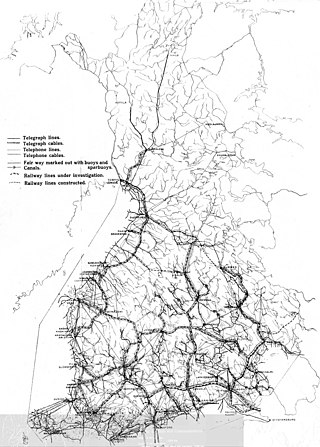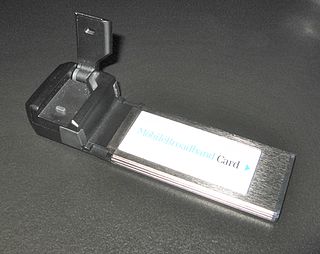
Telecommunications in Finland, as indicated by a 2022 European Commission index, highlight the country's significant role in the EU's digital sector. Finland has a high concentration of Information and Communication Technology (ICT) specialists and robust training programs, leading to notable expertise in technologies like AI and cloud computing. The nation has also made significant advancements in 5G technology. Additionally, Finland stands out for its high adoption of digital public services. The Finnish digital sector benefits from both the technology industry's contributions and government policies aimed at enhancing digital infrastructure and cybersecurity.
Telecommunications in Latvia encompass a broad range of services including the internet, telephones, television, and radio.
Telecommunications in Lithuania include internet, radio, television, and telephony.
Luxembourg is recognized for establishing local television and radio stations abroad. The RTL Group, originating from Luxembourg, operates in numerous countries. Additionally, Luxembourg is the base for SES, a leading global satellite operator.
Telecommunications in Slovenia encompass internet, telephone, radio, and television services.
Telecommunications in Austria encompass highly developed and efficient internet and telephone networks, complemented by a number of radio and television broadcast stations.

Mobile broadband is the marketing term for wireless Internet access via mobile networks. Access to the network can be made through a portable modem, wireless modem, or a tablet/smartphone or other mobile device. The first wireless Internet access became available in 1991 as part of the second generation (2G) of mobile phone technology. Higher speeds became available in 2001 and 2006 as part of the third (3G) and fourth (4G) generations. In 2011, 90% of the world's population lived in areas with 2G coverage, while 45% lived in areas with 2G and 3G coverage. Mobile broadband uses the spectrum of 225 MHz to 3700 MHz.
According to research done by the Organisation for Economic Co-operation and Development (OECD), the Netherlands is ranked with Switzerland in having the most broadband subscriptions per 100 inhabitants, has no bandwidth caps, and has the most homes passed in Europe in terms of connection speeds of 50 Mbit/s and higher.
Internet in Belgium has a high level of adoption and engagement, with a 93% uptake rate among individuals as of 2022, higher than the EU average of 89%. The country is on par with the EU average regarding digital skills, with 54% of its population having at least basic digital competencies. Illustrated through initiatives like the BeCentral digital campus, Belgium has created programs to boost digital literacy, which has trained over 425,000 students since 2017 to narrow the digital skills gap.

Internet usage in Ireland was reported at a 95% rate among individuals by 2022, higher than the European Union (EU) average of 89%. According to the European Commission's Digital Economy and Society Index (DESI) 2023 report, 70% of Irish adults had at least basic digital skills in 2021, above the EU average of 54%. Additionally, 77% demonstrated basic digital content creation skills, exceeding the EU average of 66%. Ireland's National Digital Strategy, along with the 10-year Adult Literacy for Life strategy, aims to enhance digital competencies across the workforce and society.
Internet in Malta plays a key role in enhancing the nation's digital infrastructure and public services.
The Internet in Croatia became a reality in November 1992 when the first international connection linking Zagreb and Vienna became operational.
Internet in Greece reached an 82% usage rate among individuals in 2022, yet it slightly trails behind the European Union averages in digital skills among individuals aged 16-74, as highlighted in the European Commission's Digital Decade Country Report 2023. In an effort to bridge this gap and enhance digital proficiency across the nation, Greece implemented the "Works Again" law in April 2022. This law is designed to modernize the Public Employment Service, aligning it more closely with the demands of the labor market and vocational training needs. Additionally, Greece has launched a strategic initiative for Vocational Education and Training (VET) and lifelong learning. This initiative aims to revamp educational curricula to include digital and green skills.
This article is about the Internet in Spain.

The term "Internet in Poland" refers to various aspects related to the state of the Internet in the Republic of Poland. This encompasses issues such as Internet access, governance, freedom, and infrastructure, as well as social, economic, and political factors that contribute to the digital landscape in Poland.
Sweden's internet usage in 2022 was 96%, higher than the European Union (EU) average of 89%. This contributes to Sweden's digital skills development, with 67% of Swedes possessing basic digital skills, compared to the EU's 54%. Additionally, 36% of Swedes have above-basic digital skills and 77% have basic digital content creation skills, exceeding the EU averages of 26% and 66%, respectively. Codeweek 2022 in Sweden also demonstrated gender inclusivity, with a female participation rate of 51%.
Internet usage is notably extensive in Switzerland, with 96% of the population aged between 15 and 88 engaging online in 2021. This figure demonstrates a wide adoption across age demographics, highlighted by the fact that over half of those aged 75 and above are daily internet users. The country's advanced broadband infrastructure plays a key role in facilitating this level of usage. By the end of 2022, Switzerland was ranked highest in broadband penetration among the countries of the Organisation for Economic Co-operation and Development (OECD).
Internet in Estonia has one of the highest penetration rates in the world. In the first quarter of 2010, 75% out of 1.34 million people in the country used the Internet according to Statistics Estonia. In 2017, according to the World Bank came 13th in the world by the percentage of population using the Internet, with 88.1% people using it.
Telecommunications in Denmark encompasses a well-developed network of internet, telephone services, and broadcasting stations. Denmark has high internet connectivity and widespread mobile broadband adoption.
The Digital Economy and Society Index (DESI) monitors Europe's overall digital performance and tracks the progress of European Union (EU) countries regarding their digital competitiveness. On an annual basis, it monitors the performance of member states in digital connectivity, digital skills, online activity and digital public services in order to assess the state of digitalization of each member state as well as to identify areas requiring priority investment and action.



